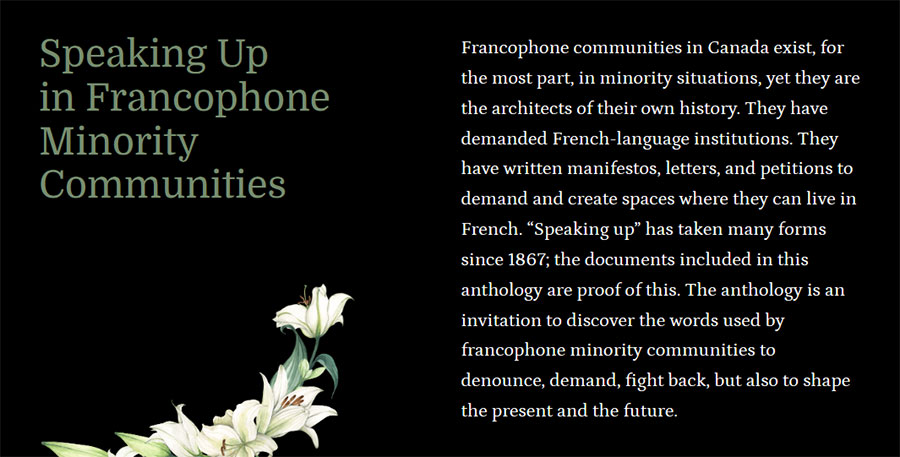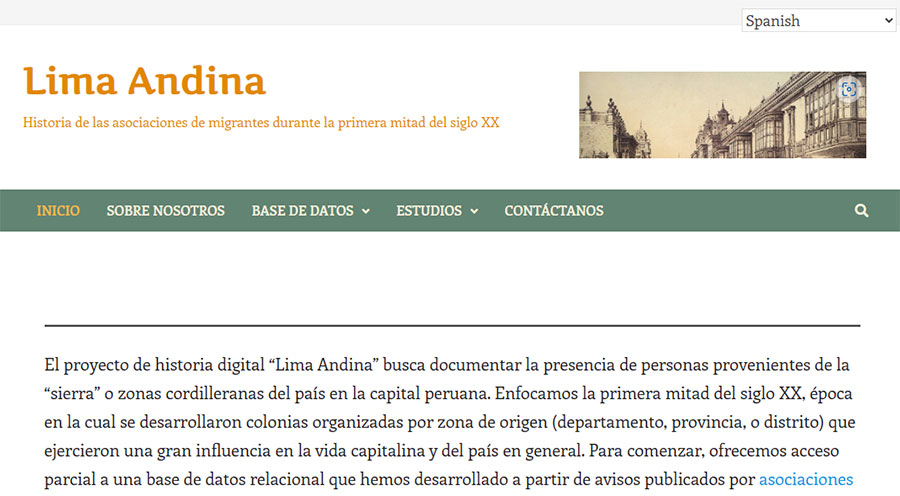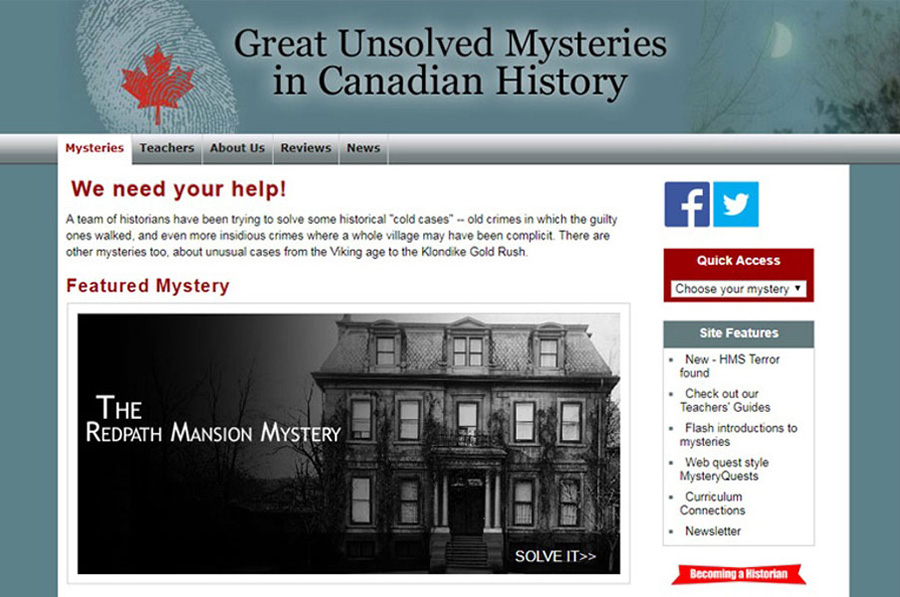
Virtual
exhibits
Immerse yourself in the rich digital history projects of dozens of researchers in Canada. We offer a curated selection of virtual museums, exhibits and experiences.

Speaking Up in Francophone Minority Communities
Speaking Up in Francophone Minority Communities exhibits the ways that Francophone communities in Canada have worked to create French-language institutions. They have written manifestos, letters, and petitions to demand and create spaces where they can live in French. This project is an invitation to discover the words used by Francophone minority communities to denounce, demand, and fight back as well as to shape the present and the future.
VISIT

Lima Andina
Lima Andina seeks to document the presence of migrants from the Peruvian highlands in the country’s capital, Lima, during the first half of the twentieth century. The centrepiece of the project is a relational database of 6,500 notices published between 1906 and 1933 by around 490 distinct migrant associations in El Comercio, Peru’s newspaper of record.
VISIT

Visualizing the Americas
Visualizing the Americas examines the history of capitalism through the production and consumption of a single commodity, the banana. It also preserves rare, endangered records that are integral to the histories of the multinational banana companies and the communities in which these companies operated. This project digitizes these archives and makes them freely accessible to anyone in the world.
VISIT

Recipro: The history of international and humanitarian aid
The Recipro project centers on the convergence of pedagogy, science, and digital humanities. This initiative results from a partnership between the history departments of the University of Ottawa and Carleton University. It is made possible thanks to a Shared Online Projects Initiative (SOPI) grant from the vice-provosts of both institutions.
VISIT

Great Unsolved Mysteries in Canadian History
Initiated in 1997, this project is a repository of information regarding cold and unusual cases. It offers educational materials designed for teaching historical methods and Canadian history at both school and university levels. The website has won various awards for making Canadian history more accessible, including the Pierre Berton Award in 2008.
VISIT

Bridge to Argentina
This bilingual and sometimes trilingual virtual museum narrates the history of immigration to Argentina. Developed in partnership with the Argentine Museum of Immigration, the site offers a range of engaging features including interactive exhibits, a “This Day in History” section, and a guided Buenos Aires walking tour. It also hosts the podcast series, “Immigrant Stories and Lives.”
VISIT

Behind the Camera
This website provides “new critical directions on the history of photography, feminist art history, and the history of modern Japan.” It functions as both a database and an educational module, featuring a collection of concise yet informative lecture videos. It also houses a wide array of translated primary source materials, annotated bibliographies, an assortment of images, and an interactive timeline, thereby expanding research opportunities to a wider audience. By amalgamating diverse strands of information, this platform facilitates the identification of meaningful connections and the generation of new scholarly insights. This bilingual website is regularly updated with a variety of modules and features current news and events within its purview.
VISIT

Punjabi in BC
Created to facilitate a deeper understanding of the Punjabi language in British Columbia, this website features oral history interviews conducted and edited by UBC students and graduates. In addition, the site offers library guides for Punjabi Studies and access to Asian Canadian archival materials. It also boasts a wealth of online resources, including links to blogs, articles, interviews, and an array of other digital materials.
VISIT

Landscapes of Injustice
Landscapes of Injustice illuminates the difficult history and experiences of Japanese Canadians during the 1940s. The platform employs visual elements and draws upon a range of primary materials including first-person narratives and case files. It offers a wealth of educational resources catering to teachers, students, and researchers alike. These resources include materials for elementary and secondary school, a research database, and a digital storytelling website. This project has garnered international attention through coordinated exhibitions in various countries and will be featured in a new partnership project, Past Wrongs, Future Choices [www.pastwrongsfuturechoices.com]. It actively engages in community-based events and makes digitized records available that provide insights into the implementation and consequences of internment.
VISIT